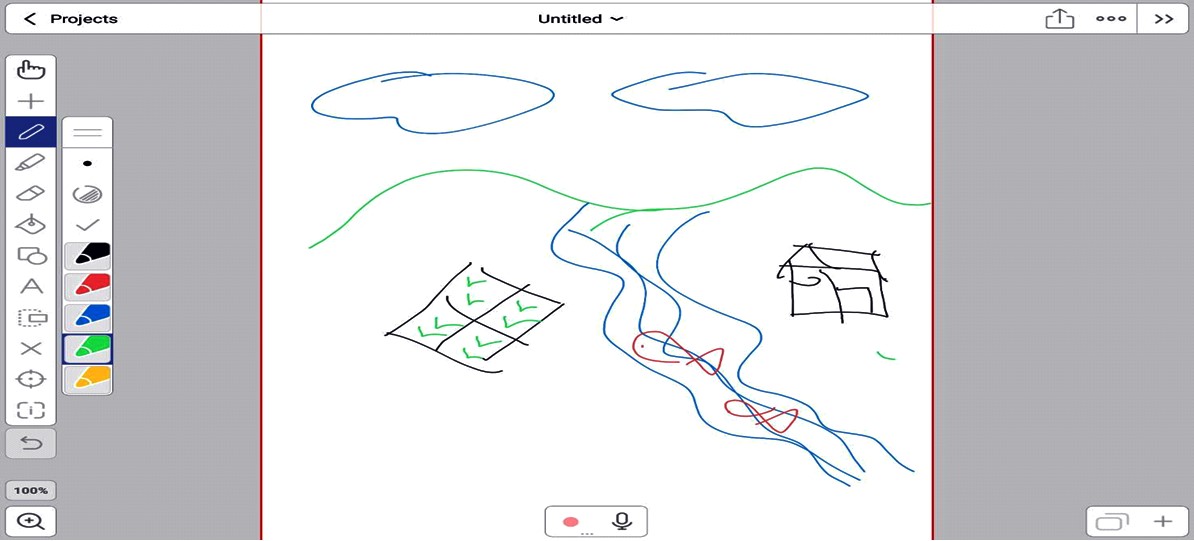ประสบการณ์การสร้างสื่อการสอนสำหรับครูในพื้นที่ห่างไกล: การตรวจสอบคุณภาพแม่น้ำและน้ำ โดยใช้เทคโนโลยีโทรศัพท์เคลื่อนที่
Main Article Content
Abstract
Duongdearn Suwanjinda, Pikulkaew Tangtisanon, Richard Procter, Luke Jones, Alireza Abbassi Monjezi, Florence Halstead and Ray Kirtley
รับบทความ: 3 พฤษภาคม 2561; แก้ไขบทความ: 15 ตุลาคม 2561; ยอมรับตีพิมพ์: 31 ตุลาคม 2561
บทคัดย่อ
บทความนี้กล่าวถึงรายละเอียดเกี่ยวกับผลลัพธ์ของโครงการอบรมเชิงปฏิบัติการที่ได้รับการสนับสนุนหลักจากทุนนิวตัน (Newton fund) บริติช เคานซิล อันเป็นความร่วมมือระหว่าง The University of Hull ประเทศอังกฤษ และมหาวิทยาลัยสุโขทัยธรรมาธิราช ซึ่งเปิดโอกาสให้นักวิจัยรุ่นใหม่จากประเทศอังกฤษและนานาชาติได้มีปฏิสัมพันธ์กัน เรียนรู้ร่วมกันและแสวงหาโอกาสในการสร้างความร่วมมือในการทำงานวิจัยต่อไป โดยมีวัตถุประสงค์เฉพาะของการอบรมเชิงปฏิบัติการเพื่อต้องการให้ใช้เทคโนโลยีโทรศัพท์เคลื่อนที่ในการทำการทดลองภาคสนามในหัวข้อต่าง ๆ เช่น การอนุรักษ์ทรัพยากร ธรรมชาติ การส่งเสริมการท่องเที่ยวในพื้นที่ทางภาคเหนือ และนำผลการทดลองมาประยุกต์ใช้เพื่อสร้างสื่อการเรียนการสอน บทความนี้พิจารณาประสบการณ์ของนักวิจัยรุ่นใหม่ในการใช้เทคโนโลยีโทรศัพท์เคลื่อนที่เข้ามามีส่วนช่วยในการทำการทดลองภาคสนามและสร้างสรรค์สื่อการสอนเกี่ยวกับการอนุรักษ์แม่น้ำแม่กก การทดลองเชิงปฏิบัติการนี้ได้ใช้เทคโนโลยีโทรศัพท์เคลื่อนที่ในการสร้างสื่อดิจิตัล ได้แก่ 1) การสร้างสื่อภาพเคลื่อนไหว 2) การสำรวจสัตว์ไม่มีกระดูกสันหลังหน้าดิน ดัชนีวัดคุณภาพน้ำ 3) การวัดการระบายน้ำ 4) การสำรวจขนาดก้อนหินท้องน้ำ และ 5) การสร้างวิดีโอ การทดลองอย่างง่ายและขั้นตอนการทดลองที่สามารถเข้าถึงได้ถูกสร้างขึ้นเพื่อให้ครูผู้สอนในพื้นที่ห่างไกลได้นำไปใช้ ผลการทดลองและสื่อการสอนได้ถูกเผยแพร่บนเว็บไซต์ซึ่งสามารถนำไปใช้เป็นต้นแบบเพื่อทดลองในแหล่งน้ำอื่น ๆ ต่อไป
คำสำคัญ: เทคโนโลยีโทรศัพท์เคลื่อนที่ สื่อการสอน พื้นที่ห่างไกล คุณภาพน้ำ แม่น้ำ
Abstract
This article details the outcomes of a workshop offered by the Newton Fund and the British Council. The workshop was coordinated by The University of Hull, UK, and Sukhothai Thammathirat Open University, Thailand. The programme, ‘Researcher Links’ provided an opportunity for early career researchers from the UK and a range of international countries, to interact, learn from each other, and explore opportunities for building long-lasting research collaborations. A specific objective of the workshop was to exploit the affordances of mobile technologies in the field in relation to topics such as natural resources conservation, tourism promotion, and application of the field test results for creating teaching media. This paper will consider the workshop experiences of several early career researchers, including how they utilized mobile technologies to create field tests and accompanying teaching media assets for Maekok river conservation. This field study used mobile technologies to create several digital assets including; 1) animation media creation, 2) benthic macroinvertebrate (biotic index) exploration, 3) watercourse discharge measurement, 4) watercourse bedload measurement, and 5) video creation. Simple experiment tests and accessible instructions were created for teachers in remote area to employ. The experimental results and teaching media assets were published on a website which could be used as an experimental model for further study in other rivers.
Keywords: Mobile technologies, Teaching media, Remote area, Water quality, River
Downloads
Article Details

This work is licensed under a Creative Commons Attribution-NonCommercial 4.0 International License.
References
Crompton, H., Burke, D., and Gregorya, K. H. (2017). The use of mobile learning in PK–12 education: A systematic review. Computers & Education 110: 51–63.
Demir, T. and Walsh, R. P. D. (2005). Shape and size characteristics of bedload transported during winter storm events in the Cwm Treweryn Stream, Brecon Beacons, South Wales. Turkish Journal of Earth Sciences 14: 105–121.
Khlangklang, N., and Roachanakanan, R. (2011). The use of benthic macroinvertebrates as biotic index of water quality by application of the Belgian biotic index (BBI) case study of the river near the palm oil factory in Amphur Nong Yai, Chonburi Province. Paper presented at the The 12th Khon Kaen University 2011 Graduate Research Conference, Khon Kaen. (in Thai)
Mustow, S. E. (2002). Biological monitoring of river in Thailand: Use and adaptation of the BMWP score. Hydrobiologia 479: 191–229.
Naismith, L., Lonsdale, P., Vavoula, G., and Sharples, M. (2005). REPORT 11: Literature Review in Mobile and Learning. University of Birmingham.
Petersen K., Wohlin C., and Baca, D. (2009). The waterfall model in large–scale devel-opment. In: Bomarius, F., Oivo, M., Jaring, P., and Abrahamsson, P. (Eds) Product-Focused Software Process Improvement. PROFES 2009. Lecture Notes in Business Information Processing, vol 32. Springer, Berlin, Heidelberg.
Pollution Control Department. (2005). Handbook of Water Quality Assessment Using Benthic Macroinvertebrates. (in Thai)
Thailandnewton. (2017). Challenge 4: Rivers and Water Quality. Retrieved from http://thailandnewton.weebly.com/challenge-4-rivers-and-water-quality.html, December 5, 2017.
The Institute for the Promotion of Teaching Science and Technology [IPST]. (2015). Using Macroinvertebrates as Indicators of Fresh Water Quality. Retrieved from 3989, December 5, 2017. (in Thai)
USGS. (2017). Science in your watershed – general introduction and hydrologic definitions. Retrieved from http://water.usgs.gov/wsc/glossary.html, December 5, 2017.
